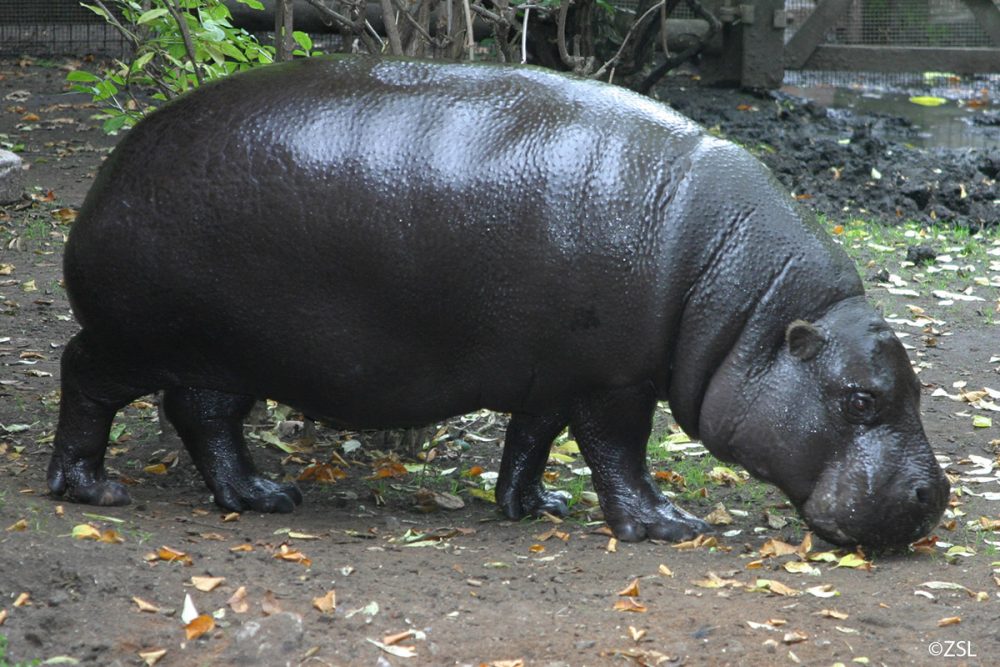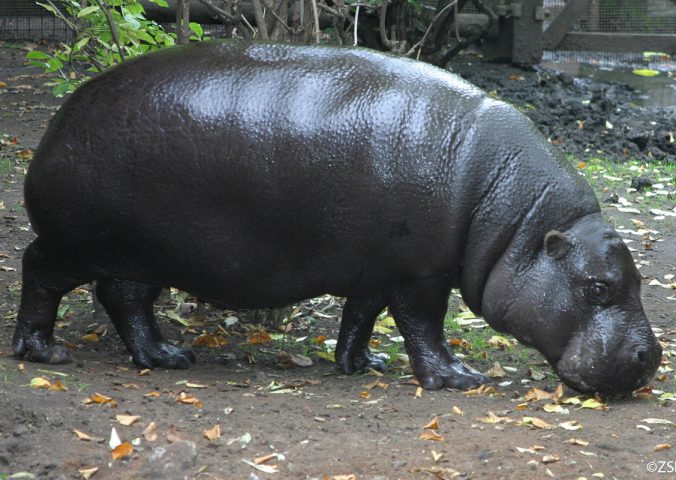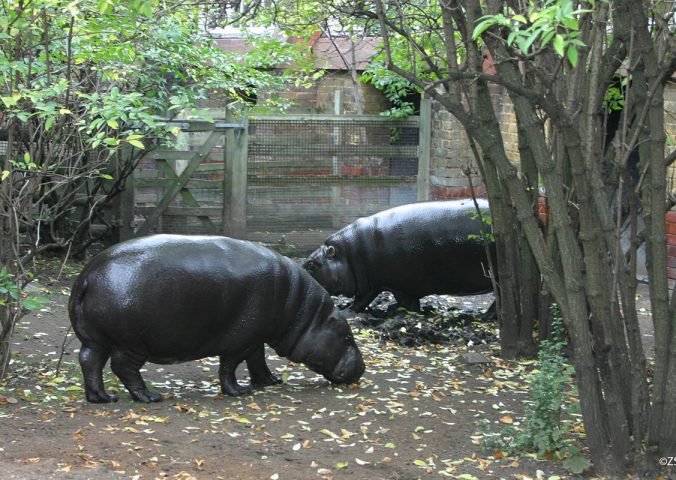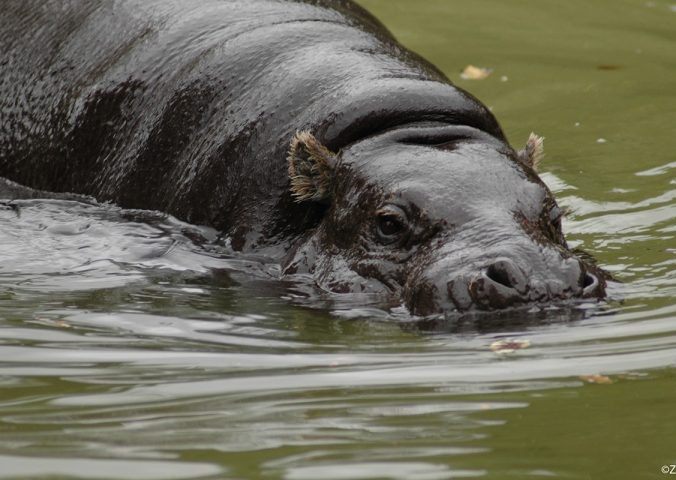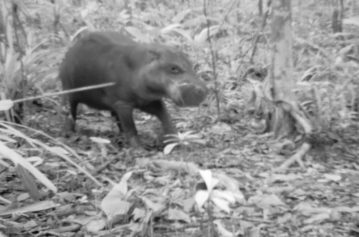About
The pygmy hippo is the smaller, reclusive and nocturnal cousin to the more widely known common hippo.
The name hippopotamus derives from the Greek for ‘river horse’, and is a particularly apt description for the pygmy hippo, which spends much of its time resting in rivers or swamps.
Pygmy hippos feature in many folktales. One suggests that the pygmy hippo finds its way through the forest at night by carrying a diamond in its mouth, which lights its path. The hippo is said to hide the diamond by day, where it cannot be found. According to folklore, to catch one a night, the diamond can be taken.
The species has a severely fragmented distribution and is under increasing pressure from logging, farming, hunting, and human settlement. The small isolated Nigerian population is thought to be extinct as there have been no confirmed reports of this distinct subspecies for decades, although unofficial reports from local people provide some encouragement that they may still exist.
There are only two species of hippos, both members of the Hippopotamidae family, but in two separate genera. The pygmy hippo is the sole extant member of its genus. Despite resembling pigs, and tapirs, their closest living relatives are actually the cetaceans; whales and dolphins. The ancestors of both whales and hippos were small water-loving terrestrial mammals that lived 50-60 million years ago. These groups diverged during the Eocene (around 54 million years ago) into the early cetaceans, which became completely aquatic, and a large and diverse group of pig-like terrestrial mammals known as anthracotheres.
- Order: Cetartiodactyla
- Family: Hippopotamidae
- Population: Unknown
- Trend: decreasing
- Size: 1.5-1.75m
- Weight: 160-270kg
EDGE Score
Distribution
The species has a discontinuous distribution in western Africa. The largest populations of H. l. liberiensis are in Liberia. Smaller populations occur in Sierra Leone, Guinea, and the Ivory Coast, primarily in regions bordering Liberia.The pygmy hippo’s range does not overlap with that of the common hippopotamus
Habitat and Ecology
Pygmy hippos’ are nocturnal and solitary, living in lowland primary and secondary forests close to rivers, streams and palm tree swamps. They feed on terrestrial and semi-aquatic plants.
